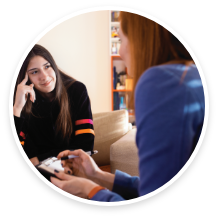

Having a new baby and learning to breastfeed can be stressful.

Surround Yourself with Supportive People
It really does take a village to raise a child. Let family and friends help you with housework or hold your baby while you sleep, rest, or take a bath. Chances are they want to help, and you deserve a break!
Relax

Breastfeeding can help you relax and handle stress better. Skin-to-skin contact with your baby has a natural soothing effect.

Sleep
Get Moving


Get Help from a Professional
Side-Lying Hold
This hold is useful when:
Cross-Cradle Hold
This hold is useful when:
Clutch or “Football” Hold
This hold is useful when:
Cradle Hold
This hold is useful when:
Laid-Back Hold
This hold is useful when: